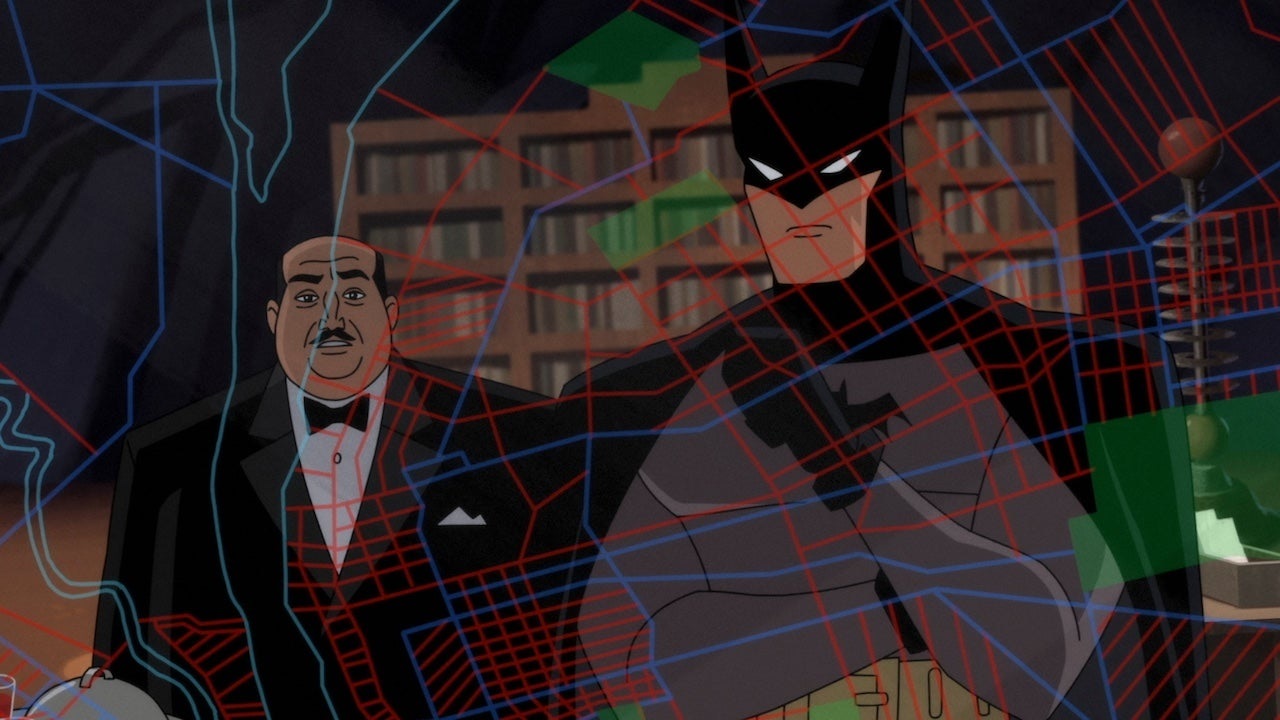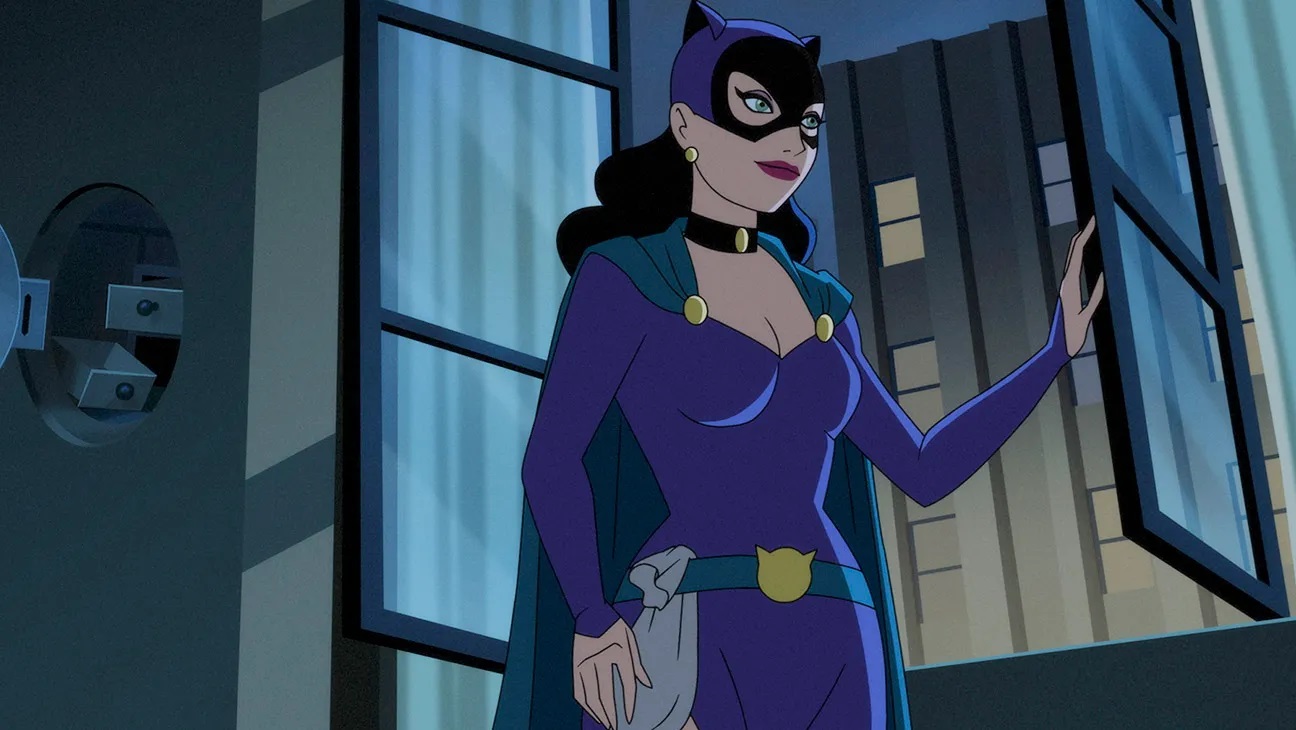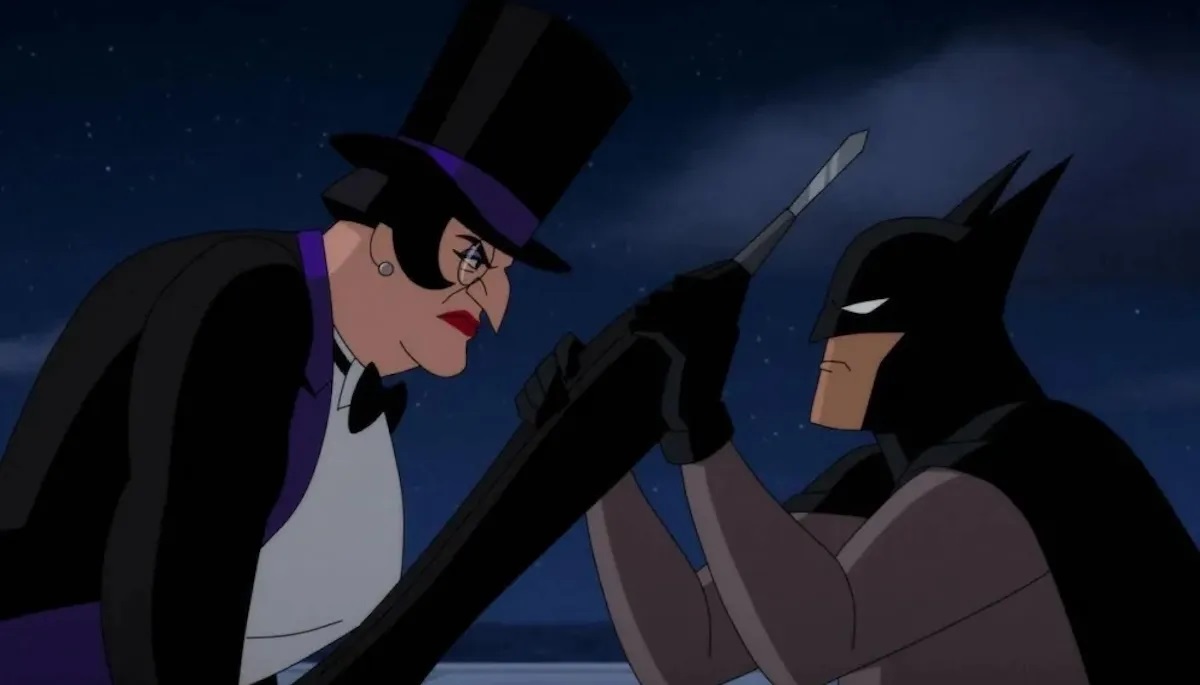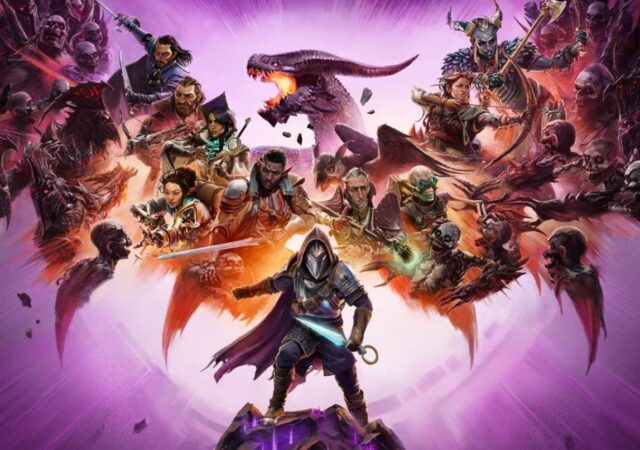Batman: Caped Crusader season one arrives with a legacy to live up to. Bruce Timm, the creative force behind Batman: The Animated Series, returns to helm this new project, and brings with him a wave of expectations. Set in the 1940s, the show promised a fresh take on Gotham’s early days and embraces the noir aesthetics that have always been central to Batman’s world. However, as the season unfolds, it becomes clear that while Caped Crusader has its moments of brilliance, it struggles to escape the shadows of its predecessors.
From the outset, Caped Crusader sets itself apart with a distinct visual style. From the Art Deco designs to the shadowy, rain-soaked streets of Gotham, it’s a world that feels both familiar yet fresh.
The 1940s setting that permeates every frame gives a nod to the classic noir films that influenced the creation of Batman himself. This period setting more than being just an aesthetic choice, shapes the narrative, grounding the story in a time when Batman is still more myth than reality; a figure whispered about in the alleys and backrooms of a city on the brink of chaos.

The decision to portray Batman in his early years has its pros and cons. To start off, it allows for a more vulnerable, less polished version of the Dark Knight. Hamish Linklater’s portrayal of Batman/Bruce Wayne captures this duality well.
His Batman is rough around the edges, still learning the ropes of crime-fighting, while his Bruce Wayne is a charismatic, if slightly aloof, figure navigating the treacherous waters of Gotham’s high society.
It’s a performance that avoids the pitfall of trying to mimic Kevin Conroy’s iconic portrayal, instead offering a fresh take that fits this specific version of Gotham.
However, this focus on Batman’s early days also limits the show’s scope. Gotham, usually depicted as a sprawling, chaotic metropolis teeming with life, feels somewhat confined in Caped Crusader. The series often centers on a narrow set of locations and characters. This can allow, deep dives into specific storylines, but it simultaneously leaves parts of the city unexplored and underdeveloped.
This is particularly noticeable in the depiction of Gotham’s criminal underworld.
While the show features a roster of familiar villains, including Harley Quinn, Clayface, and Two-Face, their stories are often truncated or underexplored. It appears as though the series is unsure of how to balance its character-driven narrative with the broader demands of a superhero epic.
The decision to reimagine certain characters also yields mixed results. Barbara Gordon’s transformation from the Commissioner’s daughter into a defense attorney is one of the more successful changes, allowing her to be more directly involved in Gotham’s legal and moral battles. Her character arc provides a fresh perspective setting her apart from previous iterations and adding depth to the show’s exploration of justice and morality.
Renee Montoya, another character who originated in Batman: The Animated Series, is given a significant role as well. Her relationship with both Jim Gordon and Barbara is well-developed, and her portrayal as one of the few trustworthy cops in Gotham adds a layer of tension to the series.
However, the show’s treatment of other characters is less effective. The decision to kill off Harvey Dent/Two-Face after only two episodes feels rushed and underwhelming, especially given the significant buildup to his transformation. This might seem like a missed opportunity as many would assume this storyline to be impactful enough to be central to the plot.

The show’s animation, while evocative of the 1940s setting, is another area where Caped Crusader falls short. The visual style lacks the crispness and vibrancy that made Batman: The Animated Series so visually compelling. The animation often feels flat, with certain scenes appearing almost unfinished. This is particularly evident in the design of Two-Face, whose appearance is more cartoonish than menacing, detracting from the gravity of his character arc.
Despite these flaws, Caped Crusader does have its moments of brilliance. The score, composed by Frederik Wiedmann, is one of the standout elements of the series. It’s a clear homage to Shirley Walker’s work on Batman: The Animated Series, yet still stands on its own. The score works as a powerful element to capture the tension and drama of Gotham and enhances the mood and atmosphere of the show.
The voice acting is also consistently strong. Hamish Linklater and Diedrich Bader deliver standout performances as the main protagonist and antagonist. Bader’s portrayal of Harvey Dent/Two-Face is particularly compelling. His transition from a slick district attorney to the tortured Two-Face being is one of the most powerful moments in the series. Even when the script and animation falter, the actors manage to bring a level of depth and nuance to their roles that elevates the material.
One of the more frustrating aspects of Caped Crusader is its inconsistent tone. The series often struggles to balance the traditional noir elements of Batman’s world with more modern sensibilities.
The inclusion of social and demographic updates, such as portraying certain characters as LGBTQ+, feels uneven. While these choices are not inherently problematic, the way they are integrated into the story often feels tokenistic, as if the series is more interested in checking boxes than in fully exploring these characters and their relationships.
The show’s treatment of Gotham’s diversityis well-intentioned but it clashes with its historical setting. The decision to portray Jim Gordon and his daughter Barbara as Black, along with other characters of color in prominent roles, is a welcome update in terms of representation. However, it also raises questions about the believability of this setting. Unlike Batman: The Animated Series, which deliberately avoided tying itself to a specific time period, Caped Crusader grounds itself firmly in the 1940s. This makes the anachronistic elements more noticeable and, at times, distracting.

In the end, Batman: Caped Crusader season one is a show that feels caught between two worlds. It wants to honor the legacy of Batman: The Animated Series while carving out its own identity, but often struggles to do both effectively. The series has moments of genuine brilliance, particularly in its character-driven storytelling and its evocative score, but these are often undermined by inconsistent writing, uneven animation, and a tendency to prioritize modern updates over cohesive storytelling.
For fans of Batman and Bruce Timm’s work, Caped Crusader is still worth watching, if only to see how it reinterprets the familiar world of Gotham. However, for those hoping for a series that matches the brilliance of Batman: The Animated Series, Caped Crusader may leave you wanting more.






















